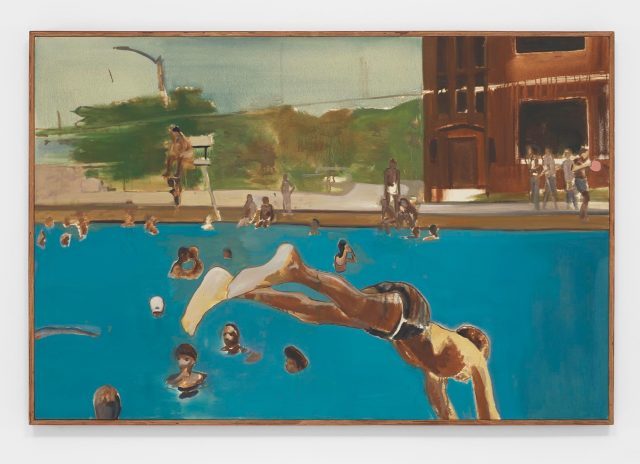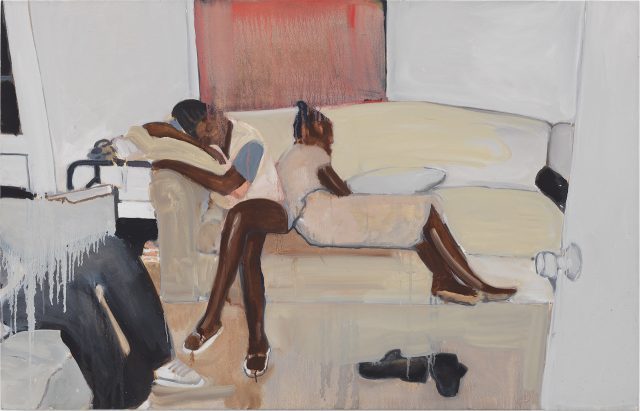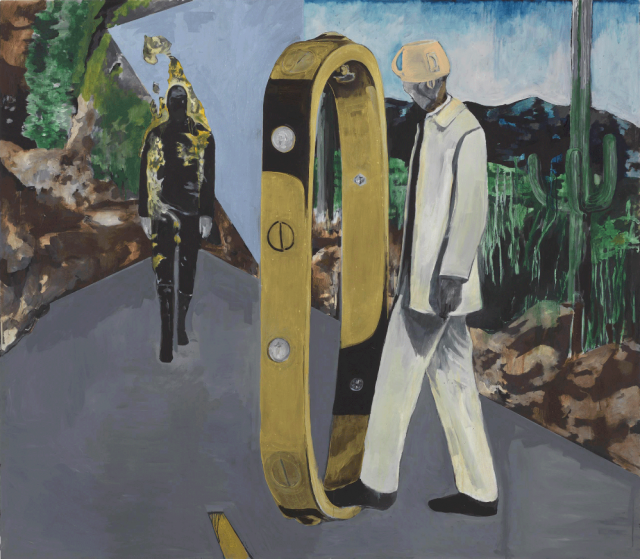
Noah Davis, 1975 (8), oil on canvas in artist’s frame, 2013 (courtesy David Zwirner)
David Zwirner
525 and 533 West 20th St. between Tenth & Eleventh Aves.
Through February 22, free, 10:00 am – 6:00 pm
www.davidzwirner.com
Doug Wheeler’s immersive light installation 49 Nord 6 Est 68 Ven 12 FL at David Zwirner is supposed to make you feel dizzy, but it’s the Noah Davis painting retrospective that will make you go weak in the knees. The Washington-born artist, who died of a rare form of cancer in 2015 at the age of thirty-two, left behind a dazzling legacy, both in his exquisitely beautiful and affecting canvases as well as his cofounding of the Underground Museum in LA with his wife, sculptor Karon Davis, and his brother, filmmaker Kahlil Joseph. “He made some four hundred paintings, collages, and sculptures, although I think it’s fair to say the deep DNA truth of Noah was that he was first and foremost a painter. His paintings are both figurative and abstract, realistic and dreamlike; they are about blackness and the history of Western painting, drawn from photographs and from life; they are exuberant and doleful in their palette,” museum board member and exhibition curator Helen Molesworth said in a statement.

Noah Davis, Untitled, oil on canvas, 2015 (courtesy David Zwirner)
The works at David Zwirner are simply staggering, breathtaking depictions of primarily black men, women, and children that often include a touch of magical realism. In an untitled painting from 2015, two girls sleep back-to-back on a couch, a partly covered figure at the left, an open door to the right, allowing us to peek into this intimate scene. In Prey, a Modigliani-esque, Giacometti-like faceless woman balances on a mountain, a deer peering off in the distance in front of her. Pueblo del Rio: Stain Glass Pants bursts to life with colorful geometric shapes and patterns that extend to every corner. The pool scene 1975 (8) offers a unique counterpart to David Hockney. Hung side by side, it appears that the pianist in Pueblo del Rio: Concerto is playing for the six dancers in Pueblo del Rio: Arabesque. Mark Rothko is specifically referenced in The “Fitz,” two very different depictions of a house. And in the surreal Imaginary Enemy, a man on fire is walking toward a second man wearing a strange item on his head and stepping on a giant golden bracelet that is taller than him.

Noah Davis, Imaginary Enemy, oil on wood panel, 2009 (courtesy David Zwirner)
The hand of the artist is vividly present in works that are superbly composed with a spectacular use of color, giving the paintings a visceral quality that gets down into your soul. As I walked around the gallery spaces, I saw other viewers who seemed to be experiencing the same power, immersed in Davis’s palpable world view. In the back room, Zwirner has re-created part of the Underground Museum, with two models of shows he was curating, family photographs, a bookshelf, a sculpture of a child by Karon Davis, Shelby George furniture designed by Davis’s mother, Faith Childs-Davis, and a video loop playing Joseph’s BLKNWS, a two-channel alternative news station that will come to BAM next month. The overall museum-quality exhibition is dizzying, in only the best way, a fitting tribute to a supremely talented artist who left us too soon.